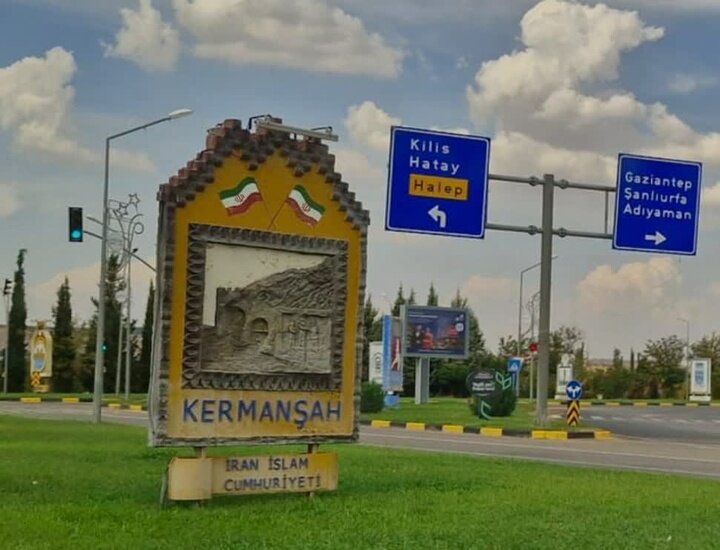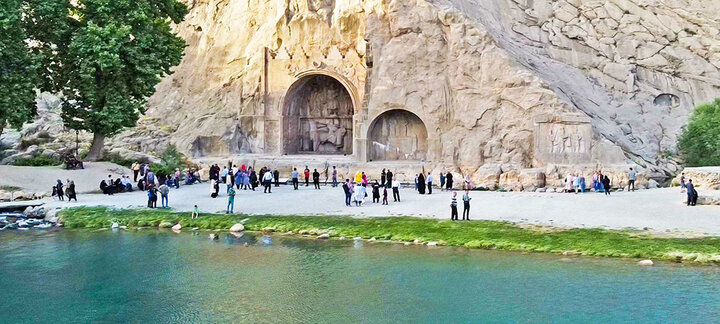Taq-e Bostan sign installed in Turkey’s Gaziantep

TEHRAN - A sign representing Taq-e Bostan, one of Iran’s most significant Sasanian archaeological sites near Kermanshah, has been installed in a prominent square leading to the city’s airport in Gaziantep.
Iman Derakhshi, an official with the Kermanshah Municipality, highlighted this installation in promoting Kermanshah’s tourism potential and cultural heritage internationally.
Speaking on Tuesday, Derakhshi explained that the monument’s placement is a result of strengthened international ties fostered last year through the Global Creative City Network’s gastronomy initiative, in which Kermanshah participated.
One of the key goals of such inter-city cultural exchanges is to introduce and showcase the unique capacities and heritage of cities on the international stage, Derakhshi noted.

Taq-e Bostan, located approximately 5 kilometers from the center of Kermanshah in the heart of the Zagros Mountains, is renowned for its large Sasanian-era rock reliefs carved around the 4th century CE. These include monumental arched niches and detailed carvings commemorating Sasanian kings, set beside sacred springs that feed a large reflecting pool.
Registered on Iran’s National Heritage List and included on UNESCO’s Tentative World Heritage List, Taq-e Bostan stands as one of the 30 surviving Sassanid relics in the Zagros region. The site was historically situated along a Silk Road caravan route, serving as both a waypoint and a ceremonial location for Sassanid rulers.
Arthur Pope, founder of the Iranian Art and Archaeology Institute in the United States, famously described Iranian art as a gift to the world, highlighting the enduring cultural significance of sites like Taq-e Bostan.
AM
Leave a Comment